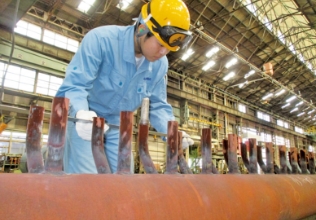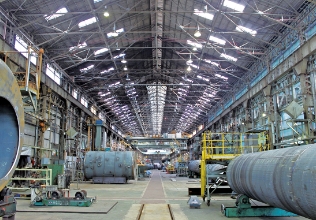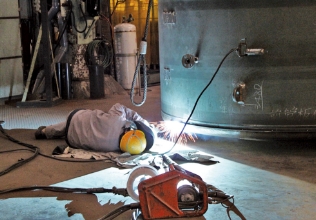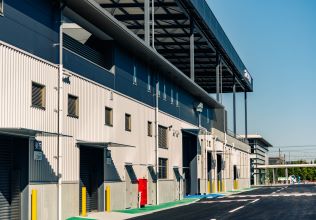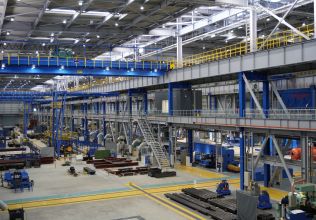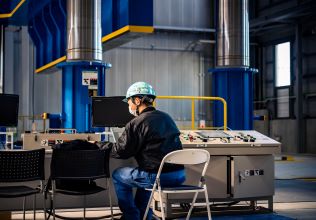
TAKUMA was founded by Tsunekichi Takuma in 1938.
The technological philosophy behind the first boiler to be manufactured, which was created by Tsunekichi, lives on as the DNA of TAKUMA to this day.
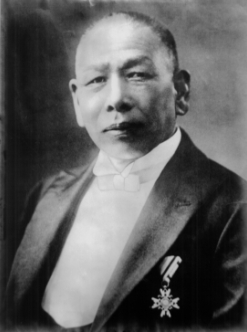
Tsunekichi Takuma, the founder of TAKUMA, was also an inventor who invented the TAKUMA boiler, the first water tube type boiler to be produced entirely in Japan. However,Tsunekichi didn’t embark on his quest to invent the boiler until around the time he turned 40. Before this layperson,who didn’t even understand the terminology in a specialized text on boilers, would become known as “the king of boilers,” before he would earn a reputation as one of Japan’s 10 great inventors of the Meiji and Taisho periods,before he would found TAKUMA, he would grapple with a series of difficulties that he was only able to overcome through a long process of trial and error.
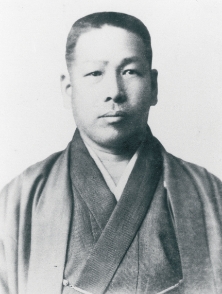
Tsunekichi was born on February 8, 1872, in the village of Omakoto in the Tohaku district of Tottori Prefecture (the present-day town of Hokuei in the Tohaku district). Skilled with his hands and an avid student from his youngest days, Tsunekichi diligently studied classical Chinese under his father, who ran a small private school. He had an older brother named Manzo and an older sister named Yone. Having heard about steam-powered vehicles and other urban wonders from his brother Manzo, who was an elementary school teacher in Kyoto, the young Tsunekichi resolved to travel to the city.
After convincing his father and brother to let him go to Kyoto at age 14, Tsunekichi initially worked for a physician, but he changed his mind and decided to become a merchant around age 20. He entered the lumber trade at age 31 in 1903, but the Russo-Japanese War broke out in 1904, precipitating a rapid fall in the price of lumber and forcing him out of business. Already responsible for his wife and children, Tsunekichi tried to reestablish himself in Korea with the aid of a friend when the war ended, but sad news about the death of his wife at the time, Kameko, awaited him when he returned to Japan after planning his business in Korea.
The heartbroken Tsunekichi remarried Kumako Harimura, who found herself in the same circumstances as Tsunekichi, when he was 35.
Kumako supported Tsunekichi’s efforts at invention despite the household’s limited means; without her help, the TAKUMA boiler would probably never have come to be. The supportive wife is shown in profile on a bust of Tsunekichi that was made after he achieved success.
Yet another encounter awaited Tsunekichi after he remarried Kumako and relaunched his lumber trading business: Yasaburo Okamoto, who would later push him down the path toward inventing a boiler.
Yasaburo was working to invent a boiler as a source of power to operate lumbermill machinery. Tsunekichi was enthralled when he heard about the proposed invention and invested in the Okamoto boiler. The project, launched around the time that Tsunekichi was 38 years old, failed, leaving Tsunekichi and his wife with an enormous debt.
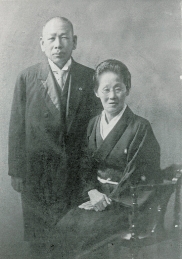
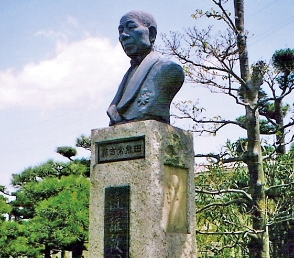
Drowning in debt from his failed business and with his family on the verge of breaking up, Tsunekichi boarded a ship with the intention of turning once more to his Korean friend. One night on the ship as it crossed the Genkai Sea, Tsunekichi became overcome by the distressed condition in which he and his family found themselves and contemplated throwing himself into the sea.
Just before doing so, he had an experience that he would later describe as a “revelation from heaven.” In that moment, he had an epiphany concerning the driving force behind the love of invention that he had cultivated throughout his life, realizing that communicating the fruits of his work to the world and contributing to human progress were the heaven-sent mission of humanity and simultaneously the greatest joy that one could have, and resolving that if he put his mind to the task, he would be successful.
Following his return to Japan, Tsunekichi repaid the loan from his failed business, and in 1912, he overcame the opposition of those around him to start work on inventing his own boiler at the age of 40.
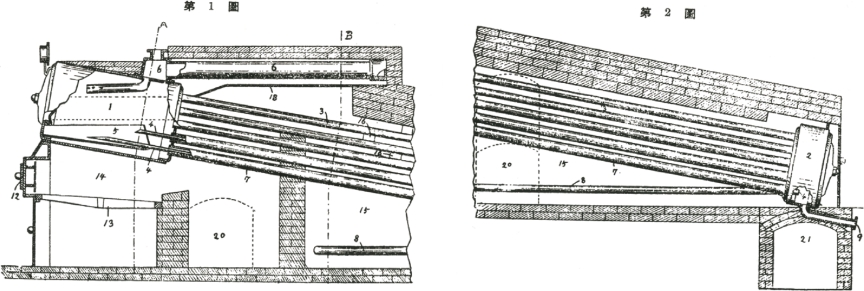
Tsunekichi, who knew nothing about boilers, bought several specialized books on the subject and set about developing his own design while drawing inspiration from designs that were famous overseas at the time, including Cornish boilers and Babcock boilers. Despite a sustained effort that was supported by Kumako, the process did not go as he had hoped.
But he didn’t give up, instead retreating from prying eyes to Mt. Takatori in the city of Kobe in Hyogo Prefecture, where he immersed himself in his research and pursued a series of hunches: that boilers were living things; that they used heat from coal to convert water into steam; that the circulation of boiler water in order to create steam from water was instrumental to the life of the boiler; that the movement of boiler water was analogous to the circulation of blood in the human body; and that boilers to date did not adequately provide the functionality of the human heart, because the part corresponding to the arteries was incomplete.
Tsunekichi tried to conduct experiments involving the circulation of boiler water, but he was unable to build a model due to the difficulty of obtaining funding. Instead, he carried out experiments using a model he had made out of implements he found in his kitchen, including pots, glass sake utensils, and a device used to toast sesame seeds. In the course of doing so, he established a theory of boiler water circulation. The water collector, which was the heart of the boiler, and the downcomer tubes, which were its arteries, together comprised the distinguishing characteristics of the TAKUMA boiler and were inventions that were unknown in the water tube type boilers of the day. In this way, Tsunekichi patented the TAKUMA boiler in 1913 and set out to found a company so that he could supply his invention to the world.
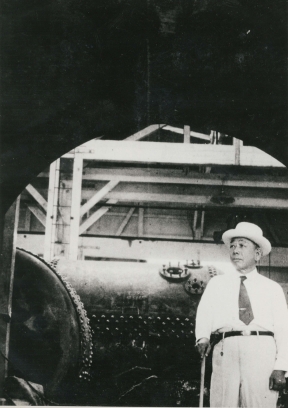
In April 1914, Tsunekichi exhibited his TAKUMA boiler at the 2nd Invention Expo in Osaka, where he won the gold prize. It was the first time for the exceptional nature of the invention to be recognized in a public setting, prompting inquiries from all quarters as the inventor began work to commercialize his product.
Eager to capitalize on the newfound opportunity, Tsunekichi enlisted the support of Dr. Masao Kamo of Tokyo Imperial University and signed a sales contract with Takada Shokai that November, prompting sales to grow smoothly. The following year, he established Takuma Boiler Company to protect his patent rights.
The superiority of the TAKUMA boiler was proven in a capacity test carried out by Kyoto Imperial University in 1919, pitting the design against the Babcock sectional boiler, a design from the Babcock & Wilcox Company in England that had earned worldwide renown. Results showed that the TAKUMA design bested its British counterpart in terms of both steam volume and thermal efficiency.
The company began selling TAKUMA boilers in Manchuria in 1924 and in Taiwan in 1926. At the time, sugar refineries in Taiwan were looking for a high-efficiency boiler that burned bagasse (a fibrous product left over after sugarcane is pressed). When performance tests carried out by sugar refineries in Taiwan and other sugar plants made it clear that TAKUMA boilers excelled at this task, the company experienced a surge of inquiries. Between 1930 and 1932, it delivered dozens of boilers to the market.
In November 1928, Tsunekichi was awarded the Fifth Class Order of the Sacred Treasure by Emperor Hirohito in recognition of his contribution to new industry. In addition, he was named as one of the Meiji and Taisho periods’ 10 greatest Japanese inventors in December 1930. He was 58 years old at the time.
Praise for the TAKUMA boiler grew, and production value approached 10 million yen, unadjusted for inflation.Buoyed by brisk sales of his first invention, Tsunekichi founded Tsunekichi Takuma Institute at his home in June 1936 and set out inventing a new boiler. He dubbed the premium, compact boiler that resulted from his effort the Tsunekichi boiler. Easy to operate, faster-starting than other boilers of the time with the same steam volume, and capable of running on about 30% less fuel, the new design earned broad praise. Faced with the need to put in place a system capable of producing the boiler,Tsunekichi incorporated his institute as a joint-stock company in July 1937, creating the Takuma Institute Co., Ltd. The groundwork for the boiler-inventing business that Tsunekichi had long idealized had finally been laid.
As a result of the Marco Polo Bridge Incident on July 7, 1937, Japan abruptly found itself embroiled in the Sino-Japanese War. As the war expanded, the Takuma Institute, which had been founded to carry out research into boilers, became caught up in wartime production.
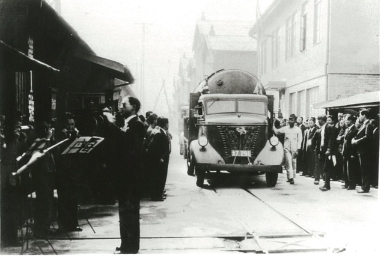
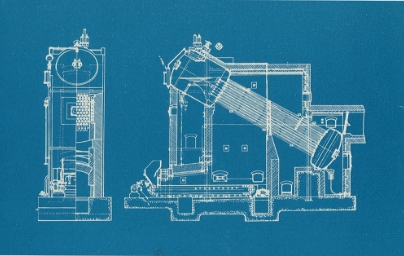
Takuma Boiler Manufacturing Co., Ltd., the forerunner of today’s TAKUMA was founded in the city of Amagasaki in Hyogo Prefecture in June 1938 to boost the institute’s production capacity. The new company absorbed the Takuma Institute that December. Tsunekichi served as the company’s first president and formulated its motto of “Serve society through boiler manufacturing.” Founded on the idea of contributing to society and the environment through the manufacture of boilers, the philosophy captures the dedication of Tsunekichi, who poured his heart and soul into inventing the first water tube type boiler to be produced in Japan, and it continues to serve as the foundation of TAKUMA and the TAKUMA Group’s management philosophy today.
Takuma Steam Power Construction Co., Ltd., was founded in March 1939 to install and operate boilers, and the company’s Tokyo Office was spun off in September 1941 to form Tokyo Steam Power Construction Co., Ltd. (today’s Sunplant Co., Ltd.). The result was a three-part business that added installation to boiler research and manufacturing.
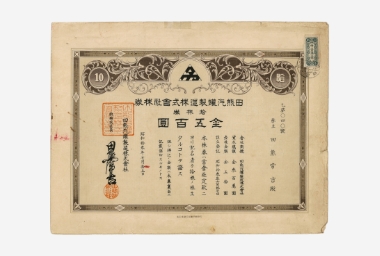
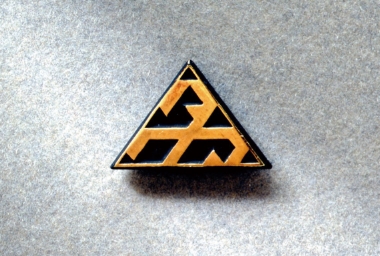
Tsunekichi worked hard as the president of Takuma Boiler Manufacturing Co., Ltd., until he resigned from the position in May 1941 at the age of 69 due in part to his advancing age. He gave the post to Yoshisaburo Fujita, with whom he had shared many joys and sorrows since before the founding of the company, and became chairman, in which capacity he watched over the company during the chaos of World War II and its aftermath. He continued in that role after the death of his wife Kumako at age 82 in March 1947 until passing away at age 81 on December 22, 1953.
On January 14, 1954, one month after his death, Tsunekichi was posthumously awarded the Order of the Sacred Treasure,Gold Rays with Rosette, for his contributions to the development of Japanese industry through his boiler business. The company still has the award itself along with the sesame seed toaster and sketches he used in his experiments with boiler water circulation and a coat worn by his wife, treasured artifacts of its history.
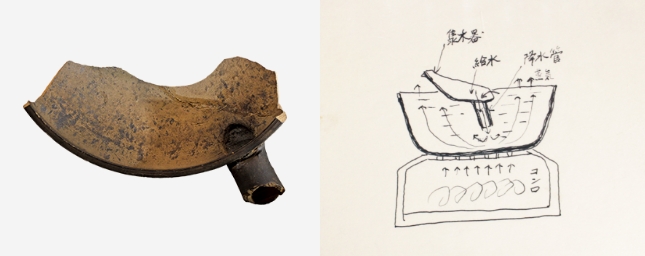
A sesame-toasting device used in boiler water circulation experiments along with a corresponding sketch
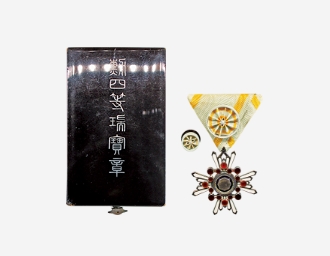
Order of the Sacred Treasure, Gold Rays with Rosette (junior fifth rank)
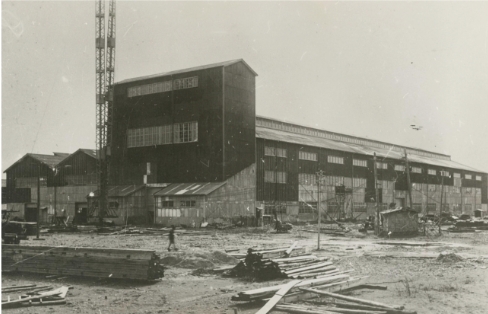
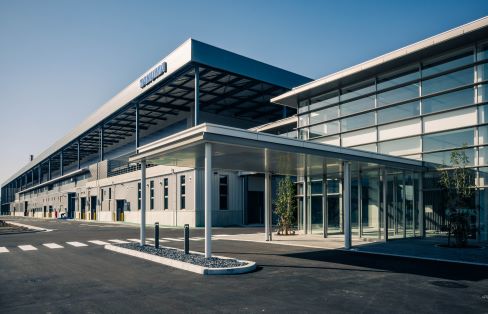
The Harima Factory at the time of its construction (left), and the same factory today (right)
Tsunekichi set out on his path to invention as a layperson who knew almost nothing about boilers and went on to invent the TAKUMA boiler as well as the Tsunekichi boiler. Boiler manufacturing technology has placed an essential role in facilitating the development of these boilers down to the present day by making it possible to manufacture the boilers invented and designed by Tsunekichi without sacrificing their quality and to deliver them to customers via a rigorous quality control system. No matter how exceptional Tsunekichi’s designs, it would not be possible to earn customers’ trust without the ability to actually build them, and the inventor’s own experience led him to pay close attention to this aspect of the company’s operations.
The Harima Factory, which was established in December 1942 by Tsunekichi to implement his ideal of “Serve society through boiler manufacturing,” continues to operate today as one of TAKUMA’s boiler manufacturing facilities. Many of the boiler manufacturing technologies that comprise the company’s core competence find expression in the skills of the plant’s engineers, and we consider passing on and further developing those skills to be essential priorities.
As they manufacture boilers to deliver to TAKUMA’s plant under a rigorous quality control system, veteran employees and young workers at the Harima Factory work together to master and pass on technologies in accordance with the same philosophy that has guided us since our founding.
